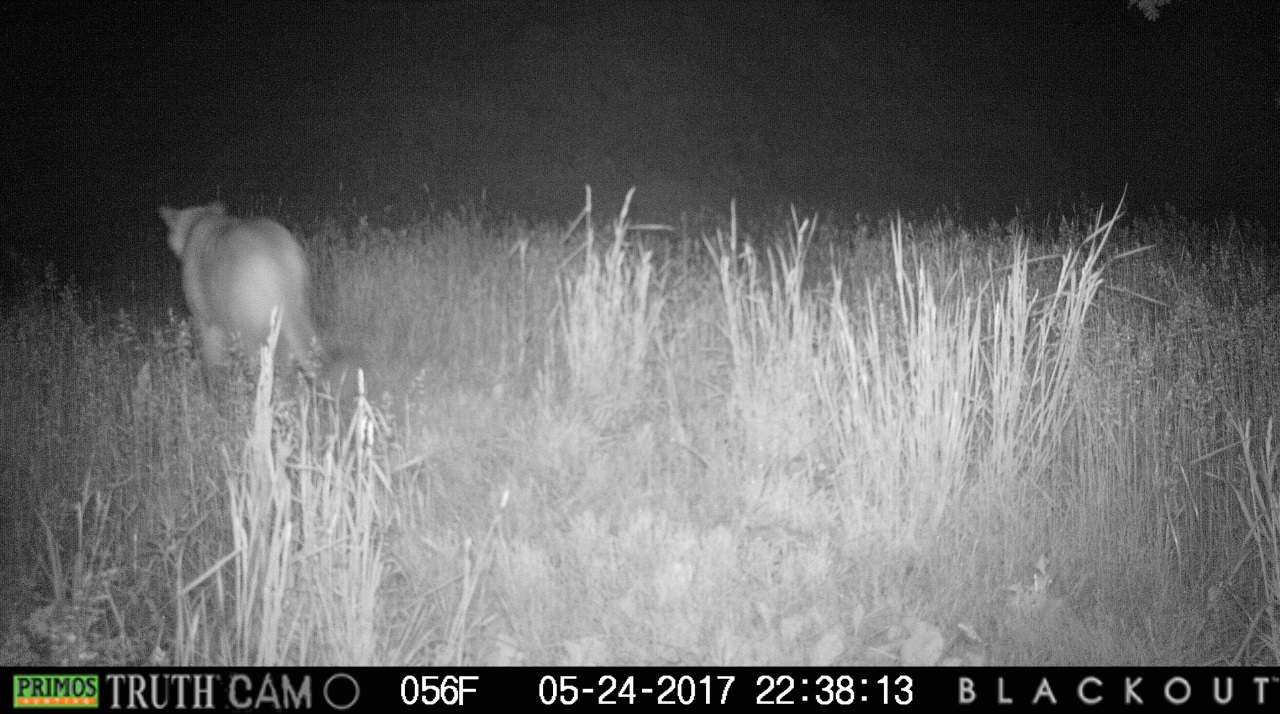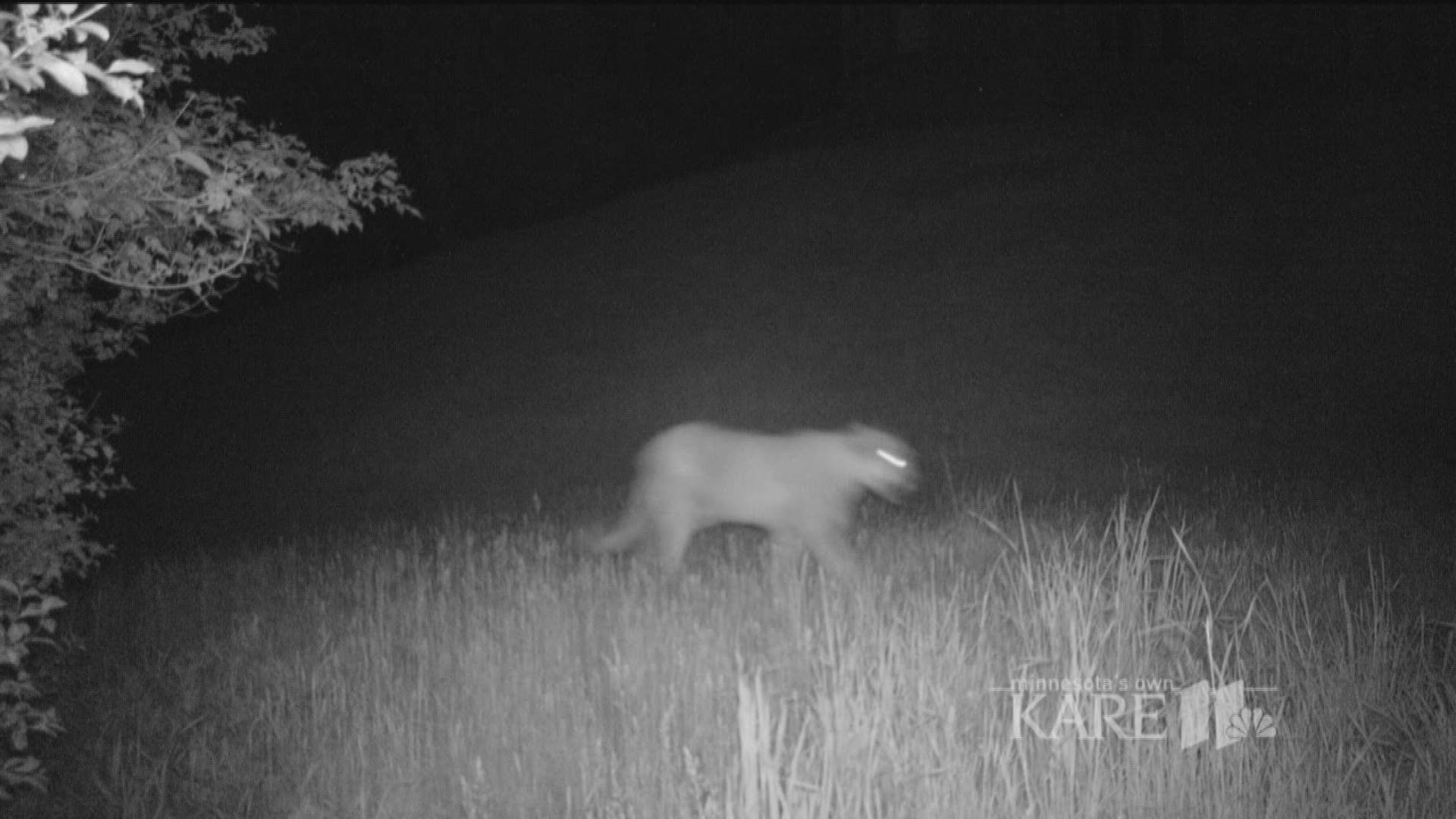LAKEVILLE, Minn. - It's a bit like Wild Kingdom, right here in the Twin Cities.
A resident of northwest Lakeville (who likes privacy, so we are not sharing his name) also likes to keep an eye on his 1 1/2-acre plot, so he installed some trail cams to see what was coming and going. Much to his surprise, on May 13 the cams appear to have captured a cat ... and we're not talking a tabby here.
The images could be those of a cougar, according to a DNR wildlife specialist, but they are not definitive. Whatever it was made a return appearance May 24, wandering through the property like he or she owned the place.

While not commonplace, suburban sprawl has made sightings of cougars, bobcats and other cats more common. The homeowner wanted to share his photos to give neighbors a heads-up about keeping a closer eye on their small children and pets.
The DNR emphasizes that even if it is a cougar or bobcat in the neighborhood there is no real cause for alarm. Cougars are very secretive and rarely ever aggressive to humans, avoiding contact with people whenever possible.
The best thing residents can do is stop feeding wildlife (if they are). Feeding area wildlife (including birds) will attract the smaller animals to your yard and neighborhood that the cougar likes to feed on.
Other suggestions from the DNR:
- Secure all garbage containers and clean all wildlife seed
- Keep small dogs and cats indoors or on leash/contained
- Keep outdoor lights on/get motion activated light
- Talk to neighbors – keep them informed and have everyone stop feeding wildlife and their pets outside for a week
- Stay indoors from dusk until dawn until you know the cougar has moved on
- Keep a close eye on children when playing in the yard
- Seal open areas under structures like porches, sheds, decks, etc.
If you do happen to encounter a cougar up-close:
- Don’t run! Running will provoke the predatory chasing behavior of cougars, as it would with other predators such as bears, coyotes, and wolves.
- Pick up small children or pets that are with you.
- Directly face the cougar, but look at the cougar’s feet, not directly into their eyes, to avoid appearing aggressive.
- If the cougar displays aggressive behavior try to appear larger—raise your arms or open your jacket over your head.
- Make noise by yelling, blowing a whistle or an air horn.
- If you have an umbrella, quickly open and close it while facing the cougar.
- Do not approach the cougar. Give it ample space to run away – don’t corner it.
- If there are cubs, be careful not to get between them and their mother.

